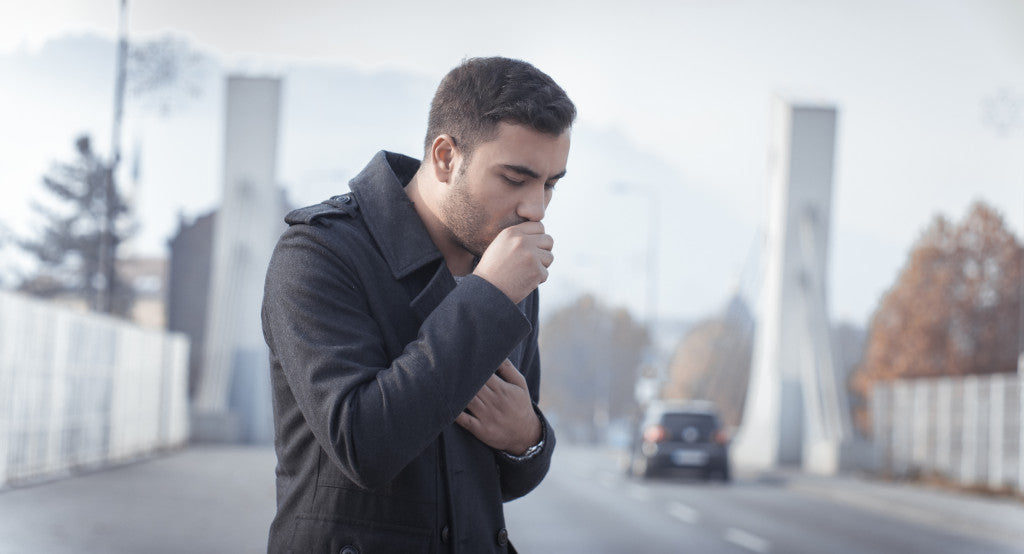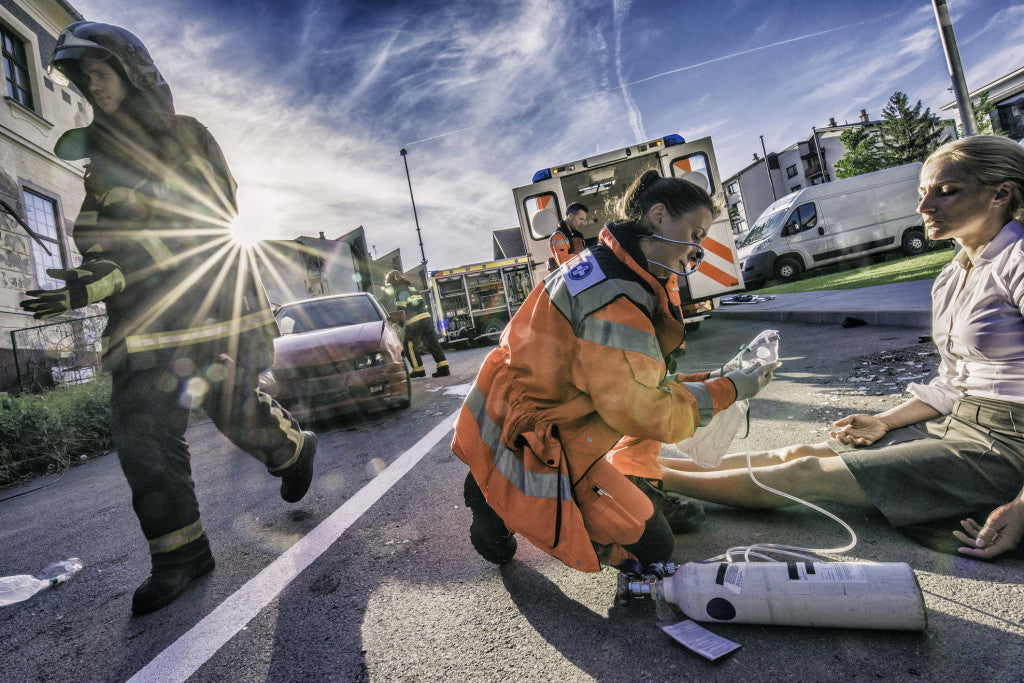Smoke inhalation is a serious concern for those in the path of a wildfire. Excessive exposure to smoke can lead to significant respiratory problems and other medical issues, and can even result in death. In fact, smoke inhalation is the most common cause of death in a fire situation.
As wildfires can move swiftly and their smoke can hang for miles, you are at increased risk for smoke exposure and inhalation problems, even if the fire isn’t nearby. It is important to know what to do in the event you or a household member starts suffering ill effects from wildfire smoke. Understanding the proper first-aid techniques for helping a victim can mean the difference between life and death.
Symptoms of Smoke Inhalation

Wildfire smoke can affect the lungs, eyes, and even your skin. Common symptoms of smoke inhalation may include:
- Difficulty breathing
- Frequent coughing
- Breath that smells smoky
- Black residue in nose or mouth
- Red, irritated, or watery eyes
- Irritated, itchy skin
Recognizing these signs early in yourself and others will help victims get the prompt attention they need to successfully survive the situation.
First Aid Tips for Treating Smoke Inhalation
If you recognize smoke-related issues in a household member, you need to:
Call for Emergency Assistance
If your phones are still working, dial 911 immediately. There may be delays in accessing your location due to wildfires in the area, but the dispatcher can provide you with additional advice for treating the victim until help can arrive.
Get Out of the Smoke
Bring the person inside, provided the air quality indoors is still safe. If not safe, evacuate immediately to a local shelter or hospital.
Checking Breathing
If the person is conscious, ask them questions about how they are feeling. If they are in and out of consciousness or unable to talk, take note of how the person is breathing. Check their airways for black residue and perform a pulse check.
Perform CPR
If the person is not breathing, you should start CPR (Cardiopulmonary resuscitation) as necessary. Report unconsciousness to 911 immediately.
Supply Oxygen

If you have a respirator mask with oxygen in your emergency supply kit, use it as soon as possible to provide fresh oxygen to the victim.
Stay Alert to Changes
Remain alert to behavioral changes in the person. Shock is possible in smoke inhalation victims so keep them in a semi-seated position to ensure good air intake.
Check for Injuries
If the victim fell down or fainted due to excessive smoke inhalation, check their bodies for broken bones, bleeding wounds, or other injuries. Administer first aid to clean up wounds. If broken bones are suspected, avoid moving the victim if possible.
As victims take in fresh oxygen, they should regain a little energy but may still appear to be disoriented and irritable. The effects of smoke inhalation can have an unpredictable impact on the brain, even causing violent behavior in the aftermath. Medical treatment from experienced professionals should be a first priority after initial first aid is given.

 Wildfire smoke can affect the lungs, eyes, and even your skin. Common symptoms of smoke inhalation may include:
Wildfire smoke can affect the lungs, eyes, and even your skin. Common symptoms of smoke inhalation may include:
 If you have a respirator mask with oxygen in your emergency supply kit, use it as soon as possible to provide fresh oxygen to the victim.
If you have a respirator mask with oxygen in your emergency supply kit, use it as soon as possible to provide fresh oxygen to the victim.



1 comment
Mark Murphy
I really appreciate your tip to check all of the airways for any black residue that might be in their lungs when they are breathing in. My wife and I recently moved into an area that has a lot of wildfires, and my wife is worried about our kids getting sick from breathing in too much smoke. I will be sure to tell her that we can check our kid’s lungs by keeping an eye out for any black residue!